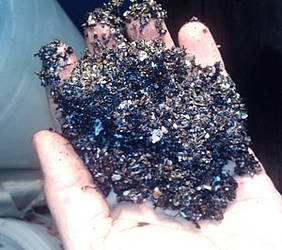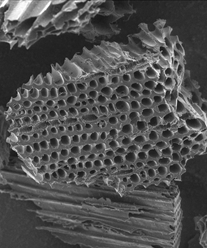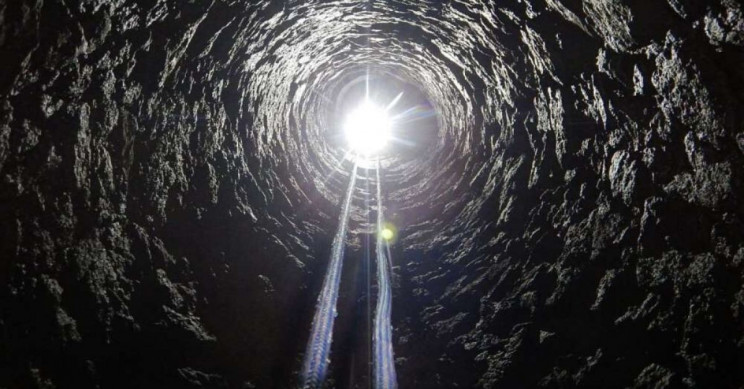
Biochar-based filter media. Photo credit: Oregon BEST
Oregon BEST funding will help Portland-based Sunmark Environmental collaborate with Oregon State University (OSU) researchers to refine a filter system based on waste biochar from lumber mills. The filter media, designed to remove heavy metals from stormwater, would cost 60% less than most activated carbon filter systems, an advantage for companies mandated to filter stormwater.
Oregon BEST and Portland Development Commission funding is helping OSU researchers to test a range of media, including five different types of biochar generated by lumber mills in the Pacific Northwest. The researchers hope to optimize a media mix best suited for removing zinc and copper, heavy metals that enter stormwater from metal roofing runoff, roadway runoff, and other sources.
“With our filter media, we’re seeing metal removal rates of between 80% and 100%,” said Robin Cook, founder and partner of Sunmark, a soil and native plant restoration company. “Most other available filter media remove only about 60%, at best, so people are pretty excited about this. But we need third-party, scientific data from research to back up our findings.”

The large surface area of biochar helps it to remove heavy metals from stormwater. Photo credit: Oregon BEST
Oregon BEST invests in industry-university teams in order to speed commercialization of cleantech products. “The engineers say great, but they want to know how much they’ll need, how long it will last, what are the flow rates, and what percentage of heavy metals will it remove,” said Cook. “Getting this third-party data is huge, and if a university has done that testing, it carries much more weight. OSU is going to be a great help.”
At many lumber mills, the waste wood used to generate electricity or kiln dry lumber is not completely burned, resulting in a mix of ash and biochar that is considered a waste product by the mills and transported to landfills. “The overarching idea with this project is to take something that’s a waste material and find another use for it – add value to it,” said OSU professor Markus Kleber. “Activated carbon is much more expensive, so our approach is to give waste biochar a function it didn’t have before, at a price people can afford.” Read more.




